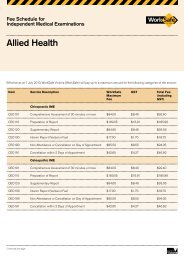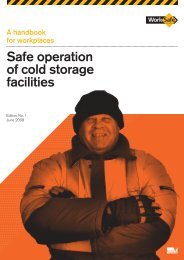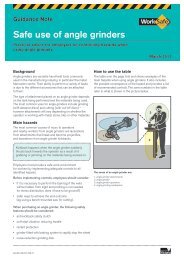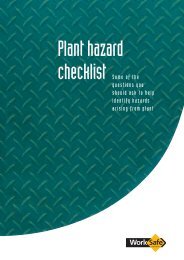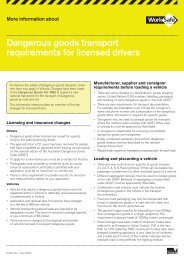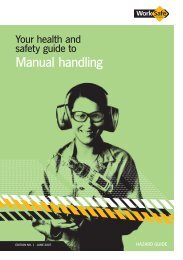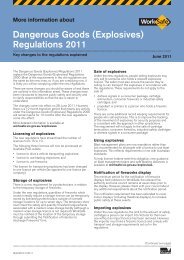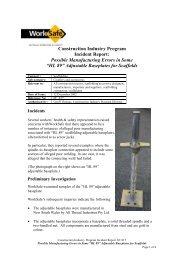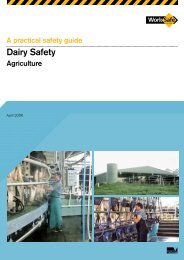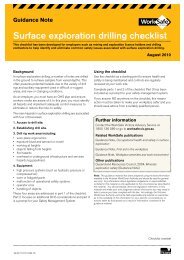National Self-Insurer OHS Audit Tool User Guide & Workbook
National Self-Insurer OHS Audit Tool User Guide & Workbook
National Self-Insurer OHS Audit Tool User Guide & Workbook
You also want an ePaper? Increase the reach of your titles
YUMPU automatically turns print PDFs into web optimized ePapers that Google loves.
<strong>Audit</strong>s are not designed to assess the performance of individuals:<strong>Audit</strong>s of <strong>OHS</strong> Management Systems should assess how effectively the system, including its structure, policies,planning activities, resourcing, operating procedures, and work practices combine together to manage the risksassociated with the organisation’s business. <strong>Audit</strong>s are not designed to measure the performance of individualsworking within the system.<strong>Audit</strong>s also generate information for management action:In addition to helping a Regulator make decisions regarding self-insurance, audits provide the organisation’smanagement with fact-based information that can be used to review <strong>OHS</strong> Management System effectiveness andplan change that will ensure continual system improvements. The information generated through an audit willprovide evidence of conformance or non-conformance with the audit criteria, however it is not designed to providedetailed recommendations for solutions to any identified problems.<strong>Audit</strong>ors:<strong>Self</strong>-insurance audits by regulatory bodies are conducted by appropriately qualified and experienced personnel.Various audit training and certification programs are available to ensure that they have the required competencyand experience for this work.The AS/NZS ISO 19011- <strong>Guide</strong>lines for quality and/or environmental management systems auditing - provides acomprehensive auditing methodology and is consistent with the quality approach underpinning the <strong>National</strong> <strong>Self</strong> -<strong>Insurer</strong> <strong>OHS</strong> <strong>Audit</strong> <strong>Tool</strong>.<strong>Self</strong>-audit programs:<strong>Self</strong>-<strong>Insurer</strong>s may elect to engage the services of an independent auditor as part of their self-audit program toobtain objective verification of conformance to the <strong>National</strong> <strong>Self</strong> <strong>Insurer</strong> <strong>OHS</strong> <strong>Audit</strong> <strong>Tool</strong>.When establishing a self-audit program, <strong>Self</strong> <strong>Insurer</strong>s should consider: establishing an appropriately qualified and experienced audit team in accordance with section 7.4 ofAS/NZS ISO 19011-2003; defining audit objectives; defining auditor responsibility and tasks; initiating audit by determining audit scope, frequency and review process; preparing audits by formulating an audit plan, audit team assignment and working documents; executing audits; submitting audit results using audit guidelines and an agreed audit plan; determining any corrective action to address non-conformance.In other words, an audit should go beyond the ‘paper trail’ to establish the level of implementation within theworkplace and whether the system contributes to improvement in health and safety performance. Evaluation ofthis evidence should enable the audit team to determine whether there is ‘conformance’ or ‘non-conformance’ withthe audit criteria.A self-audit report should also contain information about the evidence that contributed to the auditor’s judgementof conformance or non-conformance. The audit report may also include opportunities for improvement where<strong>National</strong> <strong>Self</strong> <strong>Insurer</strong> <strong>OHS</strong> <strong>Audit</strong> <strong>Tool</strong> – <strong>User</strong> <strong>Guide</strong> & <strong>Workbook</strong> Page 4 of 249Version 2.0, 3 August 2009




